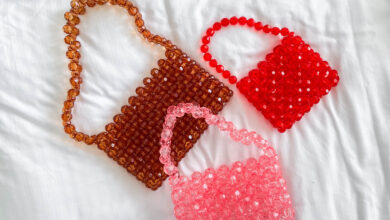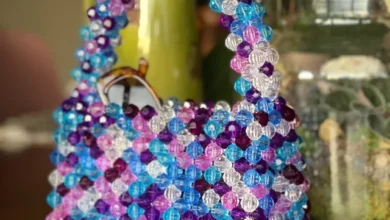Creative Draping Techniques for Bridal Hijabs to Achieve Utmost Elegance

The bridal hijab is not Bridal Hijabs just a piece of fabric; it is a symbol of tradition, culture, and, most importantly, a bride’s personal style.
To enhance the elegance of this significant accessory, designers and brides alike are exploring innovative draping techniques.
In this article, we will delve into creative draping methods that elevate the beauty of bridal hijabs and provide tutorials on achieving specific draped styles.
I. The Classic Cascade
The classic cascade is a timeless draping technique that exudes grace and sophistication, making it apt to showcase the beauty of elegant custom bridal hijabs.
Step 1: Preparation
Start with a well-ironed bridal hijab of your choice. Choose a fabric that drapes beautifully, such as silk or chiffon.
Step 2: Placement
Hold one end of the hijab in your hand and gently drape it over your head, positioning it on the opposite shoulder.
Step 3: Creating the Cascade Effect
Allow the fabric to flow gracefully down, ensuring it falls in a smooth and even manner. Pay attention to the length and adjust as needed for your desired look.
Step 4: Securing the Draping
Once the hijab is draped over the opposite shoulder and falling gracefully, secure the loose end under the opposite chin. This creates a cascading effect that adds a touch of romance to the overall bridal ensemble.
Step 5: Even Folds and Adjustments
Ensure that the folds of the hijab are even and neat. Take a moment to adjust the draping to your liking, ensuring that the cascade flows elegantly.
Step 6: Securing with Pins
If necessary, use hairpins or hijab pins to secure the draped hijab in place. Place the pins discreetly to maintain the seamless and polished look.
Step 7: Final Checks
Ensure that the hijab is securely in place, the folds are even, and the cascade effect is enhancing the elegance of your bridal ensemble.
II. Turban-Inspired Draping
Drawing inspiration from the fashionable turban, this draping technique adds a modern and chic flair to the bridal hijab.
Step 1: Preparation
Begin with a well-ironed bridal hijab. Choose a fabric that provides structure and volume, such as jersey or crepe.
Step 2: Placement
Hold one end of the hijab in your hand and place it on your forehead, slightly off-center. Make sure the longer end is on the side you want to start wrapping.
Step 3: Initial Wrapping
Start wrapping the longer end of the hijab around your head, ensuring that each wrap is snug but not too tight. Continue wrapping until you’ve covered the entire head.
Step 4: Building Layers
Once the initial wrap is complete, start building layers by wrapping the hijab in a spiral motion. Each layer should slightly overlap the previous one, creating a layered and voluminous effect.
Step 5: Adjusting the Shape
As you wrap, periodically check the shape of the turban. You can adjust the height and volume by pulling the layers slightly to create the desired shape.
Step 6: Securing the End
When you reach the end of the hijab, tuck it securely into the layers or use a hairpin to keep it in place. Ensure that the tucked end is not visible, maintaining a polished look.
Step 7: Final Adjustments
Stand in front of a mirror and make final adjustments. Check that the turban is symmetrical, and the layers are balanced. Tug gently at any areas that need smoothing out.
Step 8: Securing with Pins
Use hairpins or hijab pins to secure any loose areas or to reinforce the turban’s structure. Insert the pins discreetly to maintain a clean and polished appearance.
III. Asymmetric Elegance
Break away from symmetry by exploring asymmetric draping techniques.
Step 1: Preparation
Start with a well-ironed bridal hijab. Choose a fabric that drapes well and complements your wedding gown.
Step 2: Placement
Hold one end of the hijab and drape it over one shoulder, allowing it to fall diagonally across your chest. Adjust the length based on your preference for asymmetry.
Step 3: Securing Over the Opposite Shoulder
Secure the draped end of the hijab diagonally across the opposite shoulder. This creates an asymmetrical and dynamic look.
Step 4: Adjusting the Draping
Adjust the draping to ensure it sits comfortably and maintains the desired asymmetrical balance. Make sure the hijab falls gracefully without being too loose or too tight.
Step 5: Ensuring Secure Attachment
Use hairpins or hijab pins to secure the draped end over the opposite shoulder. Insert the pins discreetly to maintain a clean and polished appearance.
Step 6: Check the Front Draping
Examine the front draping of the hijab, ensuring it frames your face elegantly. Tweak any folds or layers to achieve the desired aesthetic.
Step 7: Final Adjustments
Check the overall balance of the asymmetrical draping and ensure it complements your bridal ensemble.
IV. Layered Luxe
Elevate the bridal hijab with layered draping that adds texture and richness.
Step 1: Preparation
Start with a well-ironed bridal hijab. Choose a lightweight fabric, such as chiffon or silk, for a flowing and elegant effect.
Step 2: Base Layer
Hold one end of the hijab and drape it over your head, allowing it to fall evenly on both sides. This is the base layer that forms the foundation of the layered draping.
Step 3: Adding the First Additional Layer
Take another section of the hijab and drape it over the base layer, allowing it to fall slightly longer for added dimension. Adjust the length to your preference.
Step 4: Creating Subsequent Layers
Continue adding layers by draping sections of the hijab over the previous layers. Each layer should be slightly longer than the one beneath it, creating a cascading effect.
Step 5: Adjusting and Balancing
As you add layers, periodically check for balance. Ensure that each layer contributes to the overall voluminous effect without overwhelming the ensemble.
Step 6: Securing the Layers
Once you’ve achieved the desired layered effect, use hairpins or hijab pins to secure the layers in place. Pin discreetly to maintain a clean and polished appearance.
Step 7: Final Adjustments
Ensure that the layers are even, the draping is comfortable, and the overall look is elegant and luxurious.
V. The Regal Crown
Embrace regality with the regal crown draping technique.
Step 1: Preparation
Begin with a well-ironed bridal hijab. Choose a fabric that provides structure and has an elegant drape, such as silk or satin.
Step 2: Initial Placement
Hold one end of the hijab and place it on your head, positioning it slightly towards the back. The longer end should be on the side you plan to start draping.
Step 3: Wrapping Around the Head
Start wrapping the longer end of the hijab around the back of your head, forming a circular shape. Ensure the fabric is snug but not too tight to maintain comfort.
Step 4: Forming the Crown Shape
Continue wrapping the hijab until you’ve covered the entire head. At the back, gather the fabric to form a crown-like shape. This is where the regal appearance begins to take form.
Step 5: Adjusting the Crown
Use your fingers to adjust and shape the gathered fabric at the back, forming a well-defined crown shape. Ensure that the crown frames the back of your head elegantly.
Step 6: Securing the Crown
Once you’ve achieved the desired crown shape, use hairpins or hijab pins to secure it in place. Insert the pins discreetly to maintain a polished and regal appearance.
Step 7: Front Draping
Check the front draping of the hijab, ensuring it frames your face beautifully. Adjust any folds or layers to enhance the regal look.
Step 8: Final Adjustments
Ensure that the regal crown is symmetrical, the fabric is secure, and the overall look exudes majesty.
Conclusion Bridal Hijabs
Creative draping techniques for bridal hijabs offer brides the opportunity to express their individuality while maintaining cultural and traditional significance. Whether opting for a classic cascade, turban-inspired draping, asymmetric elegance, layered luxe, or the regal crown, each technique adds a unique touch to the bridal ensemble.



